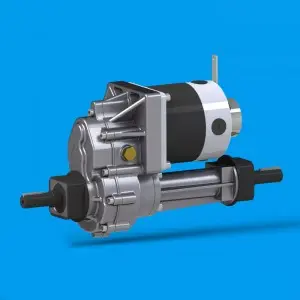When it comes to car repairs and replacements, even the most experienced car enthusiasts can sometimes get confused by the terminology. One area of particular confusion is the transaxle and its relationship to the transmission. In this blog post, we’ll explore a commonly misunderstood concept: whether a transaxle comes with a refurbished transmission. So whether you’re a car owner or just curious about the inner workings of your vehicle, this article is here to debunk the myth and provide clear answers.
Learn about transaxles and transmissions:
First, it’s crucial to differentiate between a transaxle and a transmission. Although they are related, they are not the same thing. A transaxle refers to the integrated component in a front-wheel drive vehicle that holds the transmission, differential, and other driveline elements together. The transmission, on the other hand, is only responsible for transferring power from the engine to the wheels.
Transaxle and Rebuilt Transmission Myths:
Misconceptions arise when a vehicle owner or potential buyer believes that when the transaxle needs repair or replacement, it automatically includes a refurbished transmission. However, this is not the case. A transaxle overhaul primarily involves servicing or repairing integral components within the transaxle, such as differential gears, bearings, or seals. It rarely involves replacing the entire transmission unit.
When to Expect a Refurbished Transmission:
Reconditioned transmissions often come into play when the vehicle transmission itself needs repair or replacement. It’s worth noting that, as mentioned earlier, the transmission is a separate component from the transaxle. Therefore, there is no need to recondition the transmission during scheduled transaxle repair or replacement unless the transmission is determined to be the cause of the problem.
Factors affecting repair or replacement:
Determining whether the transaxle needs repair or a complete transaxle replacement depends on a variety of factors. These factors include the severity of the driveline problem, the age of the vehicle, the availability of spare parts, and the owner’s preferences. It’s crucial to consult a trusted automotive professional who can accurately diagnose the problem and advise on the best course of action.
Transparent communication with mechanics:
To avoid misunderstandings and unnecessary expenses, it is crucial to establish clear communication with your mechanic or repair shop. Be sure to clarify the specific issue you are experiencing so a professional can accurately diagnose and resolve the specific issue. Additionally, ask for a detailed explanation of any work that needs to be done and the specific parts involved to ensure transparency and avoid any potential confusion.
In summary, the statement that replacing a transaxle will come with refurbishing the transmission is not accurate. While transaxle repair or replacement focuses on the integral components within the transaxle unit, rebuilding the transmission is only necessary when there is a problem with the transmission itself. By understanding the difference between a transaxle and a transmission and keeping open communication with an automotive professional, car owners can avoid unnecessary expenses and eliminate any confusion surrounding these important components of their vehicle’s driveline.
Post time: Nov-03-2023


